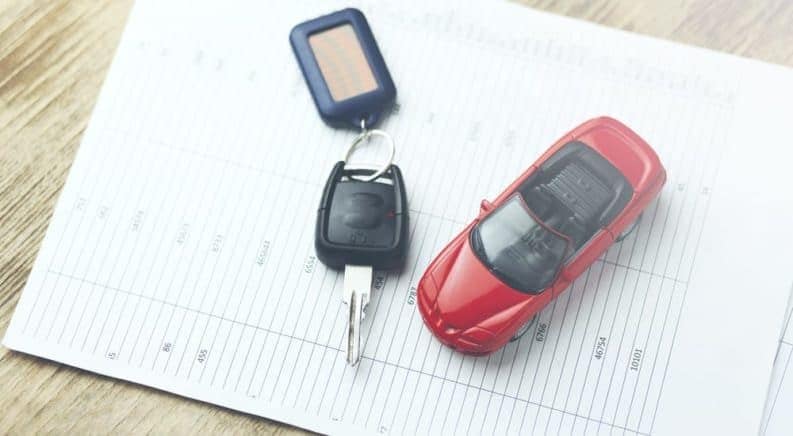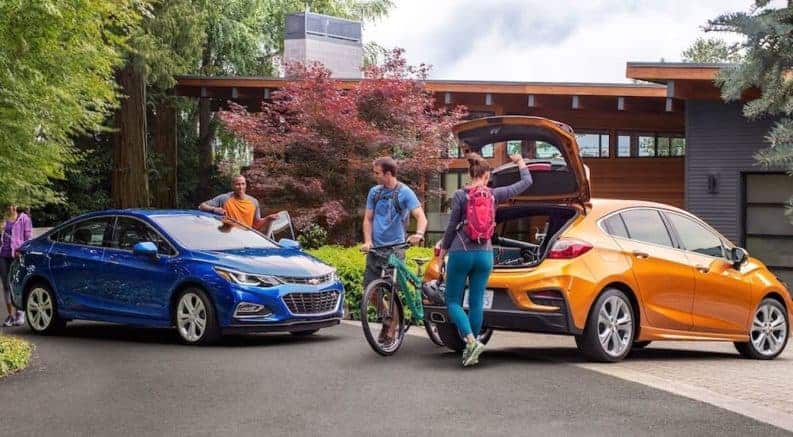The holiday season is once again upon us which for many means a tightening of the wallet come January. Whether its family dinners, travel, or just plain gift giving, holiday cheer can be a costly expense. So what better way to curb those feelings of buyer’s’ remorse come January than discussing the value of your eventual long-term investment in an automobile. When you are considering the value of a used car for purchase or better yet determining the value of the used car you already own, depreciation is the end all to any conversation when it comes to sheer dollar value and differing price points. However, there are a couple of other factors, like peace of mind and Automotive brand reliability, that you should consider as a consumer in order to make the best investment when looking at used car values.
Investment or Junker: Does It Matter Anymore?
Deciding what kind of an investment you want to make in an automobile used to be the first and foremost consideration for those purchasing a vehicle. Is this simply a junker to pass a handful of years with city driving, is it a family vehicle that needs to hold up for eventual trade-in, or is it a long-term commuter vehicle that can take on extensive mileage? However, the negative associations of buying a used car, avoiding the infamous lemon, unreliable breakdowns, costly expenditures for never-ending repairs, have all been nullified by technological advancements that increase the lifespan of vehicles based on mileage.
Generally, when purchasing a vehicle, the expected outcome of the investment is still split between drive time with the least amount of uninterrupted service repairs and potential resale/trade-in value. But gone are the worries of the length of time on that investment and thus simplifying the need for the reasoning behind that said investment. “Today’s cars are built to last as long as 250,000 miles or more with simple routine care,” says ASE-certified Master Automobile Technician and Chicago Tribune auto-service columnist Bob Weber. According to research company R.L. Polk, automobile owners in the United States are holding onto their cars well past warranty with average age reaching a record high 10.8 years. This is close to double the life expectancy of a car from say the 1930s
Just as human life expectancy has been extended, so has the life expectancy of automobiles. Most well-made vehicles last up to and well over 100,000 miles with none or limited repairs. A quick survey of used cars on AutoTrader reveal a decent majority from a variety of automakers with speedometers reading over or at the 100,000 mark (i.e.at remarkably reduced prices as well). “Owners who keep their vehicles beyond the manufacturer’s warranty period are able to have greater peace of mind that vehicles are becoming increasingly more dependable,” says David Sargent, vice president of global automotive at J.D. Power and Associates.
Purchase Reliable Brands
Since automobiles have the potential to last well over 100,000 miles, you also need to make sure you’re purchasing a reliable brand capable of this extended lifespan. The easiest way to research brands before purchasing is to check Consumer Reports’ annual list ranking auto brands by reliability. This years list includes 29 brands with published results coming from survey responses from more than 500,000 vehicles. As per usual, Toyota and Lexus topped the list for the sixth consecutive year with average reliability scores of 76 and 78 respectively. The previous year, Toyota finished first and Lexus was second. Purchasing a reliable brand will go a long way in ensuring the longevity of your investment in any given vehicle, new or used.
The Depreciation Shuffle
This increased life expectancy leads to a bit of a conundrum, though, when choosing between used or new automobiles for purchase. On the one hand, most well cared for vehicles (on the receiving end of routine maintenance) last upwards of 200,000 miles so you better buy brand new as this investment has the potential to be for the long haul; on the other, used cars can be purchased at a significantly lower price tag and still be a solid long or short-term investment. Which brings us to what I like to call the depreciation shuffle.
Unlike home purchases, automobile purchases have no chance of increasing in value. The minute you drive a new car of the lot the value of your investment begins to depreciate; some may even suggest the second you sign the dotted line on a contract. More realistically, CarFax reports from a collection of their own data that new cars have the potential to lose more than 10 percent of their value in the first month of ownership, 20 percent after 12 months, and then an additional 10 percent annually over the next four years. That is a staggering amount of depreciated value on an investment in a short amount of time. Whereas if you buy used, you end up on the positive receiving end of depreciation benefiting from the immediacy of decreasing automobile values. The original car owner takes the major hit of 30 percent depreciation in the first year and all you have to worry about is the easier to swallow 10 percent annually.
According to Car and Driver, a new 2018 BMW 3 series sells for $41,000, but if you purchase the 2017, you get it for $35,000. Keep in mind that as long as you purchase within the same generation, a used car has most of the same features without losing closing to 20 percent of its value. They assure readers that this is not isolated to luxury vehicles; Not a fluke that only applies to BMW or luxury higher priced vehicles. And it’s not, but 10 percent on a 40 thousand dollar car looks a whole lot bigger and better than 10 percent on a car selling for $24,000.
Peace of Mind
The used car value after just a year of depreciation is significant enough amount dollar wise never to buy new. From an investment standpoint, you should always buy used as there is not more to be gained but less lost. Here’s the rub though: if your spending 50-60 thousand on a car, you are probably not too concerned about saving 10 percent. And if you’re purchasing a more affordable car, the assurances that come with a new car, such as a clean slate on vehicle maintenance and history, may be worth paying that 1-2 thousand in savings.
This brings us to the ultimate deciding factor when choosing between purchasing a new or used car: Peace of Mind. Although a new car comes with that intoxicating smell along with guaranteed assurances of a clean auto history and warranty, new generally disappoints harder as the eventual wear and tear occur. There are benefits and disadvantages to both sides of the argument, but apples to oranges, this driver will always pick used. That mentality stems from two trains of thought that immediately come to mind when thinking about buying new: this is why we can’t have nice things (my roommate’s immediate reaction when I broke the pot on his new espresso maker) and a somewhat misguided nostalgia about the generational properties of a hand me down vehicles. Whatever your decision, there’s no denying that the used car value of the modern automobile has significantly increased.





